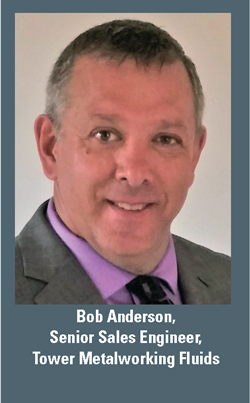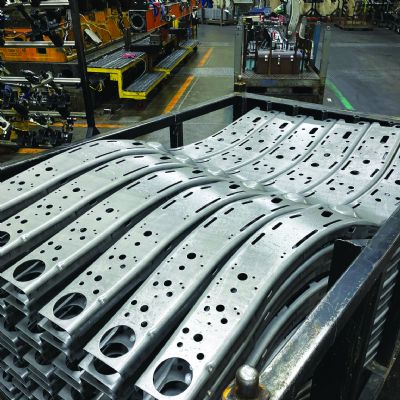Following on the Theme
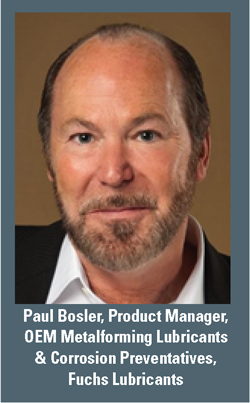 |
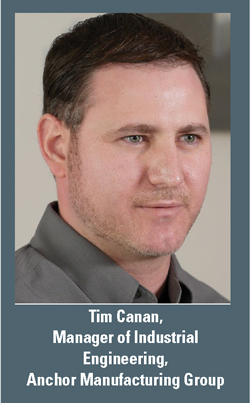 |
“The use of aluminum to form vehicle body panels, components and even structural parts,” says Bosler, building on Schaeffler’s theme, “has become important to the strategies of automotive OEMs to improve gas mileage and passenger safety. As well, the use of aluminum has become particularly important to the future of e-mobility, to lightweight vehicles and to form unique components, such as battery trays. My presentation will review the properties and characteristics of aluminum alloys compared to steels, and how these differences can affect the performance and requirements of lubricants used in traditional metal forming processes, such as cold stamping and blank washing.”
Bosler also will review new lubricant technologies and use strategies designed to improve performance of aluminum—in the press and in automotive post-processes.
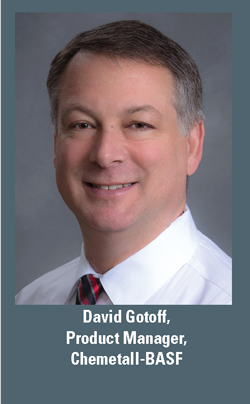 |
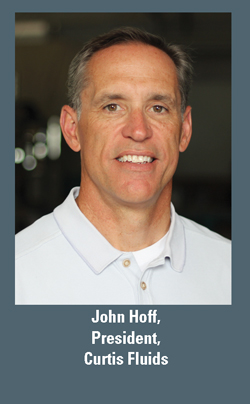 |
When it comes to delivering lubricant to the presses in a productive and cost-effective way, often a centralized delivery system proves optimal, and that’s the subject of another day-one presentation. Subtitled, The Heart and Flow of the Press Room, the presentation, by Troy Turnbull, president of Industrial Innovations, stresses that “to ensure lubrication, often stampers will over-apply lubricant, resulting in significant waste and potentially dangerous environments.”
 |
 |
“I’ll also provide some best practices related to proper lubricant-dilution requirements and monitoring, flow monitoring, and pressure sensing,” Turnbull says. “The emphasis will be on the benefits gained through plant-wide, closed-loop systems, which allow a company complete and consistent control over the lubrication application process. With this approach, thoroughly mixed lubricants are produced at a central location and distributed via an in-plant piping network throughout the manufacturing facility for use at each press. The benefits are numerous —minimal labor costs, consistent and ample lubricant delivery, and minimal waste hauling.
 |
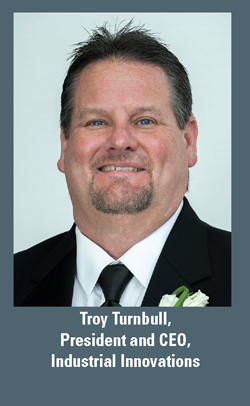 |
More on IoT, as Well as 6S
Other presentations during day one include one focused on gaining control of the entire lubrication process and incorporating a 6S methodology:
- Sort—Determine what lubricants are inhouse.
- Set In Order/Shine (clean up)— Lay out a cohesive lubricant storage and inventory management system.
- Safety—Determine if you are using the safest and most effective lubrication and delivery options.
- Standardize—Can current lubricants be consolidated?
- Sustain/Start again—Continuous improvement never ends. Implement new and more efficient products as they enter the market.
Speakers Bob Anderson, senior sales engineer, and Chris Fletcher, sales and marketing manager, Tower Metalworking Fluids, also will explain the procedures that metal formers should follow when evaluating different lubricants, assessing cost versus price, and the key metrics for determining overall success and improving the bottom line.
“Determining the parameters to monitor when testing a new lubricant is key to determining the cost effectiveness, quality improvement and process acceptance,” says Fletcher. “Preliminary steps are vital in selecting the right metal forming lubricant for the stamping process and subsequent operations. We’ll present the key steps in selecting a high-performance tooling lubricant to achieve best practices for proper application and cost saving techniques.”
 Also on day one: an important talk titled, Using Industry 4.0 Technology to Track and Measure Stamping Lubricant Use. Speaker Jeff Jeffery, CEO of Irmco, stresses that, “Data is the driver of most good business decisions. A recent Gartner Research report on manufacturing metrics notes that measuring actual costs and their impact on profitability is one of the most important metrics.”
Also on day one: an important talk titled, Using Industry 4.0 Technology to Track and Measure Stamping Lubricant Use. Speaker Jeff Jeffery, CEO of Irmco, stresses that, “Data is the driver of most good business decisions. A recent Gartner Research report on manufacturing metrics notes that measuring actual costs and their impact on profitability is one of the most important metrics.”
“Just one extra drip per second,” Jeffery continues, “equates to 28,800 drips per shift or about 500 gallons per year. At a 4:1 mix, that’s a little over three drums per year of concentrate wasted. Wouldn’t it be nice to know that ahead of time? In real time? My presentation will emphasize that information is your friend—embrace it.”
More knowledge on how stampers can contain, apply and collect lubricant comes from a presentation by Patrick Ontrop, sales and marketing manager of Pax Products. Ontrop will focus on:
1. Methods for applying the desired amount of lubricant exactly where and when it is needed, including:
- Methods for applying lubricant to the material prior to it entering the die
- In-die lubrication technique
- Methods for applying thin and thick lubricants
- Containing spray, splash and mist.
- Collecting lubricant from conveyors and scrap shakers
- Collecting lubricant from stamped parts
- Methods for filtering lubricant
- Bacteria Issues
4. Methods for addressing issues such as:
- Applying very small amounts of lubricant
- Spraying multiple lubricants from the same system
- Monitoring lubrication spray
Day Two Features An Award-Winning Case Study
Anchor Manufacturing Group, Inc., Cleveland, OH, received a 2019 Award of Excellence from PMA, presented at FABTECH in Chicago, for productivity gains realized on its automotive steering-column crash-tube line. The company specializes in high-strength aluminum assemblies, stainless-steel exhaust products, safety-critical parts, steering-column components and assemblies, and appearance parts.
The first major improvements to the line, and what will comprise the meat of Canan’s presentation, occurred on the form and pierce equipment to correct mechanical issues with the equipment, as well as quality issues with the parts. “Investigation of a galling issue in the forming machine,” Canan says, “revealed oil sprayers being bumped out of position and not spraying on the correct location of the tube. Hard-lining the lubrication system corrected this problem. We also worked with our supplier to analyze the lubricant at different frequencies after a tank recharge. This helped determine when the system needed to be recharged and led to the addition of an appropriate preventive maintenance schedule.”
Lubricant Lifecycle Management
Also on day two, attendees will learn additional tips and tricks for reducing lubricant waste in their stamping operations. Says presenter John Hoff, president of Curtis Fluids:
“With new and ever changing regulations on industrial waste and the rising cost of fluids, metal stampers must dig deeper into the total cost of their lubrication efforts, which includes much more than just the price of the lubricant. Studies show that the total cost of a lubrication program can register as much as 5.5 times the initial cost of the fluid.
Reducing or eliminating those opportunities for waste is precisely what Hoff will discuss, looking closely at the many stages of the lubricant lifecycle throughout the plant.
“Whether looking at mixing, applying, cleaning, reclaiming or removing the lubricants,” he says, “metal formers should appoint a process-improvement person with the authority to make changes assigned to the project. Once completed, these improvements must become a part of the everyday actions, not only of management, but especially of the people on the shop floor.”
Finally, we turn the attention to parts-cleaning fundamentals and maximizing the performance of a parts-cleaning program, with a presentation by David Gotoff, product manager at Chemetall-BASF.
“I’ll discuss various mechanical and chemical cleaning technologies, enabling managers to make intelligent decisions regarding the selection, design, installation and upgrade of cleaning systems,” he says. “Topics include soils, substrates, cleaners, rinsing and drying, and the means to verify cleaning and rinsing effectiveness, as well as process automation, safety, troubleshooting and preventive maintenance of process equipment.” MF
View Glossary of Metalforming Terms
See also: Tower Metalworking Fluids, IRMCO, FUCHS Lubricants Co., BASF-Chemetall, Pax Products, Inc.
Technologies: Lubrication, Materials, Training







 Event at a Glance
Event at a Glance 